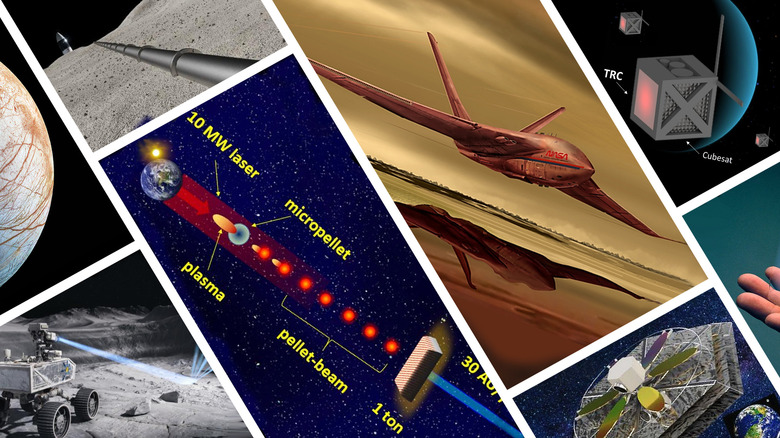These NASA-Funded Projects Could Change The Future Of Space And Technology In 2023
NASA has announced the visionary projects shortlisted for the 2023 batch of its Innovative Advanced Concepts (NIAC) program, which supports ideas that aim to transform space travel and related projects in the near future. The space agency has selected a total of 14 entries during the first phase of its 2023 NIAC fellowship, which bestows a grant worth $175,000 for each project.
Among them is the Lunar South Pole Oxygen Pipeline (L-SPoP), the brainchild of Peter Curreri from Houston-based Lunar Resources. The idea is to build an oxygen pipeline on the moon's south pole. The initial proposal is to build a pipeline that runs for about three miles, transporting the valuable gas from an extraction site to a storage region like a lunar base. Meanwhile, a cool concept from the University of Florida, called Bimodal NTP/NEP with a Wave Rotor Topping Cycle, is working on a propulsion tech that could move astronauts from Earth to Mars in just 45 days, according to NASA.
That is joined by another project titled "Biomineralization-Enabled Self-Growing Building Blocks for Habitat Outfitting on Mars." The core premise is that instead of shipping prefabricated building material from Earth to Mars, scientists can use fungi and bacteria to produce biominerals and biopolymers on the Red Planet's surface by binding together the Martian regolith. "These self-growing building blocks can later be assembled into various structures, such as floors, walls, partitions, and furniture," the project overview on NASA's website explains.
Rapid space exploration is still the focus
Edward Balaban from NASA's Ames Research Center has proposed Fluidic Telescope (FLUTE), a space observatory that relies on a technique called fluidic shaping in microgravity. On the travel and exploration side of things, Planet Enterprises scored a winner with TitanAir, a boat-aircraft hybrid that aims to explore Titan, the largest moon of Saturn. Using a novel technique involving the ingestion of condensed methane and other dense gaseous material in Titan's atmosphere, TitanAir will effortlessly switch between flying in Titan's atmosphere and swimming in its lakes.
The most interesting submission — and also one that has been floated on numerous occasions in the past — is the Pellet-Beam Propulsion concept. This one imagines a propulsion system for moving payloads weighing a ton (or more) in space, thanks to a beam of particles moving at over 74.5 miles per second and accelerated using a high-power laser. The beam would push the payload across the interstellar medium. The concept proposal mentions that "the pellet-beam outer planets can be reached in less than a year, 100 AU in about 3 years, and solar gravity lens at 500 AU in about 15 years."
In 2019, a similar project proposal at NASA discussed a beam propulsion system that would enable interstellar missions to Proxima Centauri b at nearly 10% of the speed of light. A similar propulsion architecture proposed by a NASA Jet Propulsion Laboratory fellow could move 80 tonnes of payload to Jupiter's orbit in one year.
